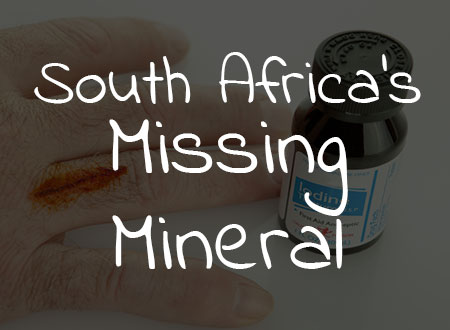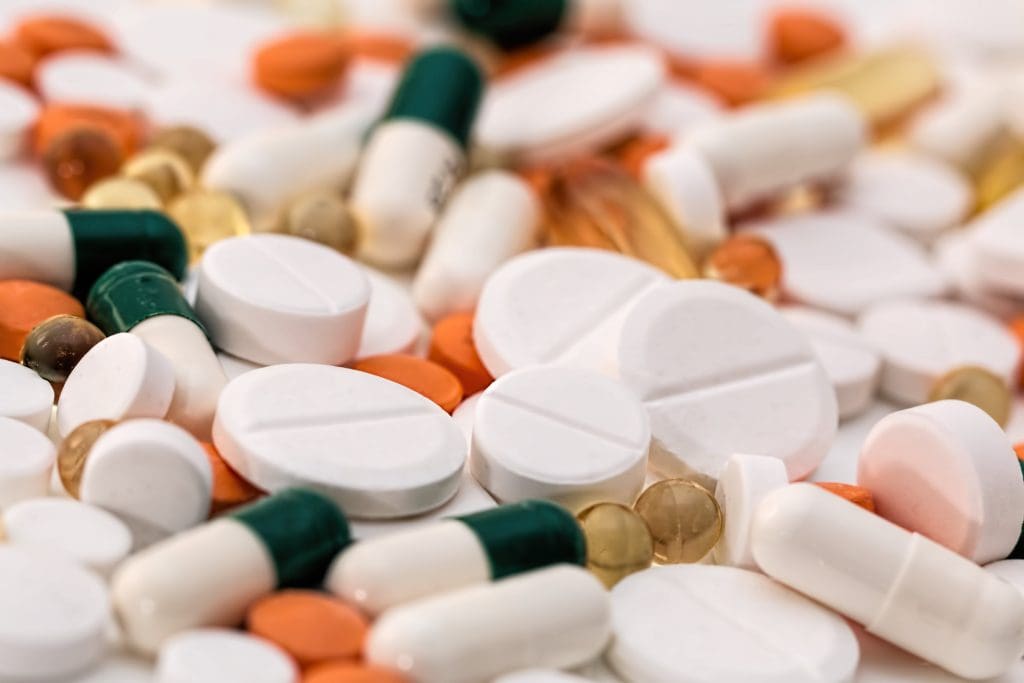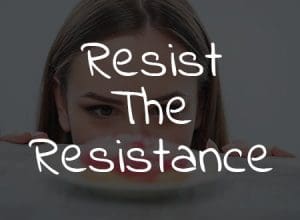

Iodine has suffered unfairly from bad press in the past, but the ‘universal nutrient’ is making a healthy comeback.
You probably know it as the dark brown disinfectant used on scrapes and wounds, which gives many hospitals their distinctive smell. But less than a hundred years ago, doctors gave iodine as a cure-all medicine when they didn’t know what was wrong with a patient. The irony is, it usually worked.
Nobel laureate Albert Szent-Györgyi
– incidentally, also the man who discovered vitamin C – wrote, “When I was a medical student, iodine in the form of KI (potassium iodide) was the universal medicine. Nobody knew what it did, but it did something and did something good. We students used to sum up the situation in this little rhyme: If ye don’t know where, what and why, prescribe ye then K and I.”1
Today, we know a lot more about why iodine is so important for us. But South African soil, from which our iodine-containing food should be grown, is particularly poor in iodine. Many South Africans still don’t get enough of it from their diet, despite government interventions.
The thyroid is an inconspicuous butterfly-shaped gland that curves around the bottom of your Adam’s Apple. Its job is to make important hormones that play a part in a whole host of chemical processes in the body. These include everything from how the body uses energy to how sensitive it is to other hormones. But, as inconspicuous as a healthy thyroid may be, if there’s a problem with how it works, it begins to swell noticeably.

A swollen thyroid is called a goitre, from the Greek word for “neck”, and a goitre is usually a sure sign that the thyroid is either not making enough hormones, or making too much. These conditions are respectively called hypothyroidism and hyperthyroidism. Both of these can also be caused by autoimmune conditions, such as Graves’ disease or Hashimoto’s disease, which means the body’s own antibodies are attacking the cells of the thyroid gland for unknown reasons and causing its dysfunction. This is why, if you suspect you have thyroid problems, it’s important to first have your iodine levels checked before taking any measures to supplement with iodine.
The benefits of iodine as medicine for people with goitres have been known for almost two centuries. Only eight years after the discovery of iodine, a Swiss doctor named JF Coindet – who had previously treated goitre patients with sea sponge and seaweed – figured out that the ingredient that made all the difference was iodine. As an experiment, he gave large doses (by today’s standards) of iodine to patients with goitres and had positive results.2 This was back in the 1820s.
The years of refinement and experimentation by the medical world that followed produced a widely used, water-based solution of iodine crystals and potassium iodide – the latter was added to the solution to make the iodine more absorbable in the body. This cure-all medicine was the same “KI” solution that’s praised so highly in the student rhyme quoted by Albert Szent- Györgi. Unfortunately, it’s reputation as a kind of panacea for all ills didn’t last.


In the 1930s, thyroid hormones became available for the first time. Doctors started prescribing these to patients who had iodine deficiency and goitres, instead of the previously used iodine-iodide solution. During this time, iodised salt also made its first appearance in the US thanks to widespread propaganda and the public started relying on salt alone to get their necessary supply of iodine.3 Doctors assumed the new measures were fixing the population’s iodine deficiency, because they were seeing fewer goitres. They didn’t realise that iodised salt is actually a poor conveyor of iodine, because the iodine competes with the high levels of chloride in the salt when it comes to being absorbed into the body. In other words, a very small amount – only about 10% – of the iodine in iodised salt ever makes it into a person’s system, even though it’s enough to control a goitre.4,5 But the absence of a goitre doesn’t necessarily mean there is enough iodine in your body. You may have an iodine deficiency without it causing your thyroid to swell. Nevertheless, the same kind of salt iodisation program was implemented locally.
Just like the US government, South Africa introduced a voluntary salt iodisation programme in 1954 in an attempt to control the high number of goitres occurring in the population. But the uptake by salt producers was only about 30% and few people had access to iodised salt.6 Goitres remained a problem in many parts of the country, right up to the 1990s.
Only by 1995, did the government make iodisation compulsory and pushed up the levels of iodine required in salt. This had marginal success, but the positive gains made by this programme are under threat again. Both locally and internationally, more people are beginning to avoid salt altogether for misinformed “health” reasons, or moving to organic sea salt, which contains no iodine. In the US, there are indications of iodine deficiency in a significant proportion of the population, which has been growing steadily, because people use less iodised salt.7 The result is that doctors all over the world are seeing a rising number of iodine deficient patients yet again. In a policy brief to the South African Medical Research Council (MRC), researcher Dr Pieter Jooste writes, “Iodine deficiency in communities not only causes endemic goitre, but results in a host of abnormalities collectively known as iodine-deficiency disorders (IDD)”.8 He adds that with severe iodine deficiency, these disorders may include abortions, pre-birth deaths, severely stunted mental and physical growth and thyroid problems. Even moderate deficiency can lead to problems with brain and mental development in children and adults who have apparently normal thyroid glands.9
In addition to iodised salt initiatives of the early 1950s, socalled “iodophobic” articles began showing up in the US more regularly. At the same time, thyroid extracts, thyroid hormones and, for the first time, pharmaceutically patented radioactive iodine as “safe and effective” treatments for thyroid problems took centre stage.
It’s an early example of a familiar scenario: a safe, natural medicine was discredited and shouldered out of the way to make space for pharmaceuticals that carry larger profit margins. But those who suffer most from these strategies are the consumers, who are either misled or kept in the dark about the dangerous side effects of “safe” pharmaceuticals, which often relieve symptoms only, leaving the underlying cause of disease unaddressed. Radioactive iodine is a good example of this.
Today, the conventional way of treating thyroid problems is with thyroid blocking medicine, surgery or radioactive iodine. What all of these have in common is that they aim to reduce the volume or size of the thyroid but, again, this merely addresses a symptom of the problem. The way in which particularly radioactive iodine goes about its work is worrying. Radioactive iodine literally destroys thyroid cells to reduce the size of the gland. But the radioactive iodine can also bind to other places in the body, where it may cause havoc.


Two key studies of the long-term effects of radioactive iodine treatment are particularly worrying. The first found a gasp-inducing 400% increase in the rate at which people died from thyroid cancer if they’ve used radioactive iodine.10 The second, more recent study found the following:11
There are studies that have found no increased risk for radioiodine, but if common sense prevails, any medicine that has the word “radioactive” in its name should be treated with a healthy dose of suspicion.
Ask your doctor for an iodine-loading urine test. After given a loading dose of iodine, you will be asked to give a urine sample, and the more iodine in your urine, the less iodine has been absorbed by your body and the closer to normal would be your body’s iodine levels.
If you doubt whether you have enough iodine in your system, here is an easy home test you could do to give you a rough indication.
In South Africa, the recommended daily allowance (RDA) of iodine is 150mcg.17 The optimal daily allowance (ODA) of iodine for adults is 225mcg. But research done by a prominent expert on iodine, Dr Guy Abraham, shows that mainland Japanese safely consume a daily average of 13,8mg (13,800mcg) of elemental iodine and they are one of the healthiest nations in the world, based on overall well-being and cancer statistics.18
Measurement Micrograms (mcg)
References
This information has been made available for informational purposes and educational purposes only. the content is not intended to be a substitute for professional medical advice, diagnosis, or treatment. Always seek the advice of your physician or other qualified health care provider with any questions you may have regarding a medical condition or treatment and never disregard professional medical advice or delay in seeking it because of something you have seen in this or any content on restore.
Watch Dr. Golding talk on Integrative and Anti-Aging Medicine.
Sign up for our newsletter to find out more about the exciting world of integrative medicine
